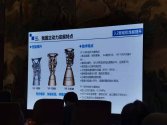You are using an out of date browser. It may not display this or other websites correctly.
You should upgrade or use an alternative browser.
You should upgrade or use an alternative browser.
China's Space Program News Thread
- Thread starter crazyinsane105
- Start date
- Status
- Not open for further replies.
by78
General
Aerodynamic study of payload separation for the Tengyun spaceplane.

A bit more information on the Tengyun spaceplane.
In the next five years, major engineering work on critical systems will commence, and by 2030, it will enter commercial service. As designed, it can loft two metric tons of payload into the low-earth orbit (300km), and can be reused 100 times. Intended for space tourism as well as launching satellites.

China launched a Long March-6 carrier rocket on Tuesday, sending nine commercial satellites into space. The rocket blasted off from Taiyuan Satellite Launch Center in north China's Shanxi Province at 11:20 a.m. (Beijing Time). This was the 366th flight mission of the Long March rocket series. The satellites, including Qilu-1 and Qilu-4, entered planned orbits and will provide east China's Shandong Province with remote sensing services for land survey, urban construction, agriculture, forestry, energy, disaster prevention and reduction.
A bit more information on the Tengyun spaceplane.
In the next five years, major engineering work on critical systems will commence, and by 2030, it will enter commercial service. As designed, it can loft two metric tons of payload into the low-earth orbit (300km), and can be reused 100 times. Intended for space tourism as well as launching satellites.

I hope they don't waste money on this boondoggle.
Pure vapor.
Z
Cant read, is there something unexpected there?Side by side comparison of YF-100F, K and M variants.
View attachment 71405
As I posted "the comparison of the three" in their configuration, dimension and plumbing etc. Nobody has seen a M variant before. Telling the difference between F and K is difficult because they were never put side by side.Z
Cant read, is there something unexpected there?
There are more details in the texts, but by just comparing their looks you would be able to tell the key features and purposes of them.
I hope they don't waste money on this boondoggle.
Pure vapor.
I see space planes as an alternative to reusable rockets. It's only a boondoggle if they didn't learn from NASA's mistakes with the STS. However, there is the optics to consider. Space junk floating in space and landing in residential areas (even with pre-warnings) isn't a good thing. Also, there's a good chance the model you see won't be the same as the end product.
Although the 2-ton maximum payload is too low, should this method become viable, it might pave the way for other variants with greater capacity.
- Status
- Not open for further replies.

